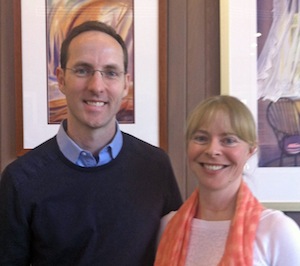Creating Community in the Garden
By Marsha Goldberg, Fairfax Master Gardener

Landscape by Thomas Ranier
The idea of plant communities, known as “phytocoenosis,” isn’t new. The concept was popular as an earlier landscape practice but until recently was forgotten by modern, traditional horticulture. A plant community is a group of plants that occur together in an environmental area and have similar requirements for elements such as water and nutrients. The conceptual framework provides scientists with a way to organize information and helps with land management and conservation. However, it is a useful idea for gardeners as well, as Rainer and West emphasized during their presentation at Alexandria’s Green Spring Gardens.
In his remarks, Rainer talked about his early career designing large-budget gardens for private clients of the Washington, D.C.-based landscape firm, Oehme, van Sweden and Associates. Those gardens required equally large maintenance budgets, a factor that concerned Rainer when he moved to designing public spaces. While the public projects had budgets for installation, most didn’t have adequate maintenance funds to keep them looking the way the designer had intended. Rainer began contemplating how he could makes his gardens more sustainable and resilient, which is equally relevant to home gardeners.
He studied how plants grow in the wild to see whether there were principles about how plants grow together that he could apply to landscape design and garden planting. From native plant communities, Rainer hoped to learn strategies to make his landscape designs both more beautiful and more enduring. He concluded that understanding the layers and dynamics of plant communities in the wild could indeed improve planned landscapes.
All plant communities are naturally layered vertically, Rainer observed. That is, even in a meadow, forest or woodland, there is almost always a base of lower grasses or plants that is spreading horizontally and holding the ground. Gardeners often cover bare soil with mulch. Nature does the same thing but uses “green mulch,” covering bare soil with plants, though they may be sparse among fallen leaves and woody debris.
Rainer admitted that process of vertically layering requires a lot of plants. Woody shrubs must be under-planted with herbaceous species. Tall grasses may need to be under-planted with lower sedges. Perennial borders will require multiple layers of ground-holding plants to support taller, accent species. The goal of layering is not just to reduce mulch use, but also to create more stable, enduring and beautiful plantings. Rainer and West recognize that mulch can be useful, especially as a home gardener works to establish so many new plants. But because mulch is not sustainable and must be renewed regularly, it ultimately costs more and requires more labor than green mulch.
While home gardeners may fret over choosing just the right color combination of plants, West pointed out that having a mostly green layer of ground plants will tie together a garden and visually integrate a range of hues. Diversity, she said, is a key factor; plants that have evolved to grow well together in the wild will do well together in gardens, both above and below ground. West said that taller plants, which typically occur singly or in smaller groups in a naturally occurring plant community, have deeper roots; lower-growing plants, which appear in larger numbers, typically have shallow roots, so they will be compatible underground as well. Layering, she emphasized, is a “… functional way of creating ecological combinations instead of just color combinations.” Tall plants, such as giant Rudbeckia, shrubs or trees may be planted in small numbers but will be visually dominant because of their height. Mid-layer species, planted in clumps, are the “design layer” and are part of the background until they bloom. They can have high visual impact if they bloom at different times — for example, irises in the spring and asters in the fall.

Ranier and West
You can learn more about the work of Thomas Rainer and Claudia West from their book, Planting in a Post-Wild World and from Rainer’s blog, Grounded Design, as well as from a story about Rainer that appeared in the New York Times, He’ll Try Anything.